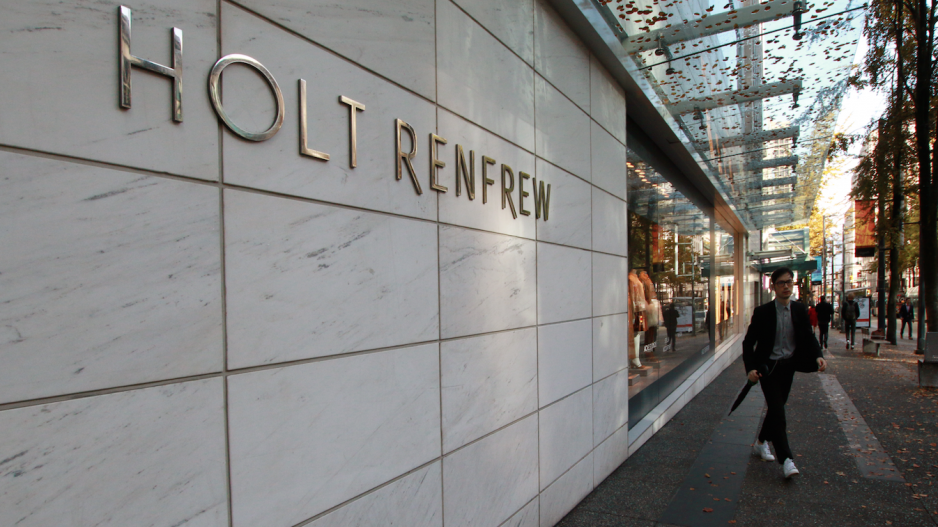Sears Canada’s plan to close all its stores and liquidate its assets in the lead-up to the holiday season has retail watchers musing about the future of department stores.
No one expects business at remaining department stores to suddenly collapse, but retail analysts and pollsters say competition is getting fiercer and department stores that do not operate efficiently or embark on wrong-headed strategies could start to feel the pain.
“Holt Renfrew, for many years, has been an operation in disarray,” DIG360 principal and retail analyst David Gray told attendees at the October 12 Retail West 2017 convention.
He explained to Business in Vancouver afterward that this “disarray” stems from internal Holt Renfrew teams not working together. Instead, workers in the merchandising, marketing, technology and data areas are all in “separate silos,” he said.
Another potential problem is that the company is going out on a limb in its bid to go even more upscale than it has been.
Going higher-end means that fewer shoppers will be able to afford the chain’s products, and those who do will be part of an international jet set that is accustomed to shopping at stores such as Selfridges & Co. in London, England.
Such “high-end luxury” stores set the bar high among well-heeled shoppers, Gray said.
“Then they come back to Canada and go to Holt’s. Holt Renfrew is going to have a perception problem.”
Holt Renfew has these challenges while being affected by a separate industry-wide problem.
Brands are increasingly opening kiosks within department stores to introduce their products to new markets. Employees at those kiosks then collect lists of customers who were originally shoppers at the department store. The brand then leaves the department store to flourish on its own with the help of that customer information.
Saint Laurent, for example, introduced its brand to Metro Vancouverites with a kiosk in Holt Renfrew. It then left last year to open its own boutique on Thurlow Street near Alberni Street.
“Saint Laurent is one of the world’s most popular brands right now,” said Retail Insider Media owner and retail analyst Craig Patterson. “The brand essentially says, ‘Thanks for all your help. We’re ready to go on our own. We’re grown up now.’ They open a boutique and the department store loses the brand completely.”
Patterson does not think Holt Renfrew is in operational disarray.
He also understands the store’s ambitious renovations at its Vancouver store.
He has heard that the Vancouver store’s expansion is in anticipation of it becoming the top-selling luxury department store in North America outside of Manhattan – potentially with sales as high as $500 million annually, though sales haven’t yet achieved such a level, despite being the top performer in the Holt chain.
Gray does not doubt that Holt Renfew’s Vancouver store is doing well but he attributes that success to well-heeled Asian tourists – people who are also helping Nordstrom’s (NYSE:JWN) Vancouver store become one of the top-selling stores that the Seattle-based company operates.
Nordstrom, in contrast to Holt Renfrew, has cross-silo teams, Gray said.
It smartly had buyers come up to Vancouver on a regular basis in the lead-up to opening the store in September 2015 and has since been poaching some Holt Renfrew customers on the high end, Gray said.
“A lot of Nordstrom shoppers are also coming from the [Hudson’s] Bay [Co.],” said Christian Bourque, who operates Leger Marketing’s Montreal office.
Bourque pointed to data from a recent survey that Leger carried out with DIG360 showing that of those customers who are spending more on fashion today compared with two years ago, 30% shop at a high-end store.
For those who shop less for fashion today than they did two years ago, a much higher percentage shop at mid- to low-end department stores, he said.
“If there is potential, it would seem to lean in the direction of mid- to high-end department stores as opposed to mid- to low-end department stores.”
Bourque, Gray and Patterson agree that chains such as Saks Off Fifth, Winners and Nordstrom Rack, at the lower end, will nip at the heels of the mid-tier Bay in the years ahead. Specialty retailers, such as H&M, Zara and Uniqlo are also expected to continue to chip into the customer base that department stores once relied on.
Another concern for the Bay should be what Gray calls its “hinterland and suburban” locations.
While the Bay has successfully transitioned in urban areas and has identifiable and successful flagship stores, Gray said other stores are basically “just big boxes with stuff” – something that will not retain shoppers when competition sprouts. •




